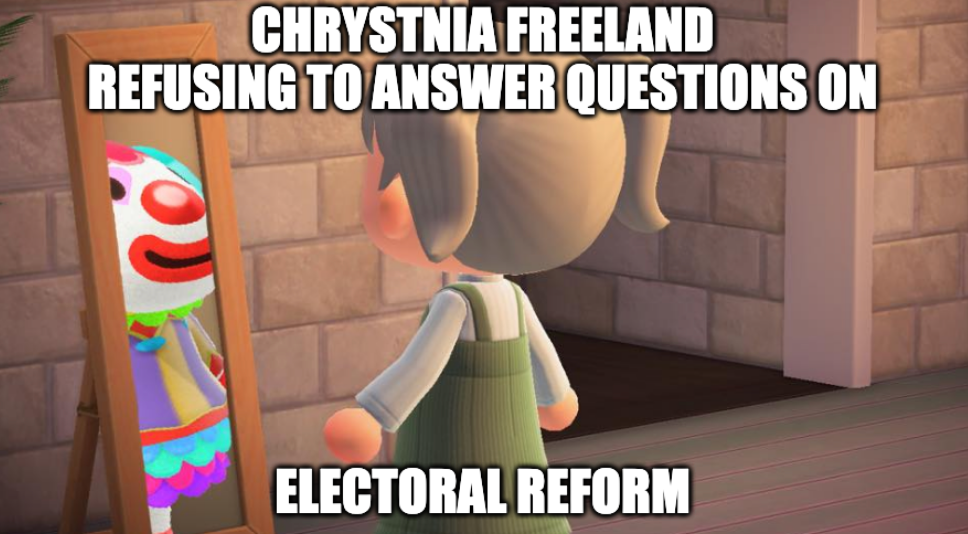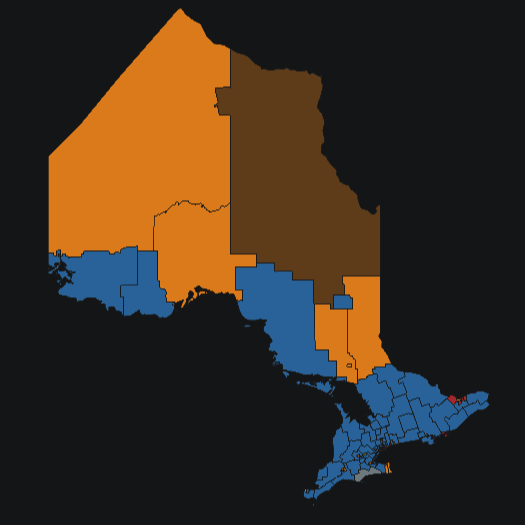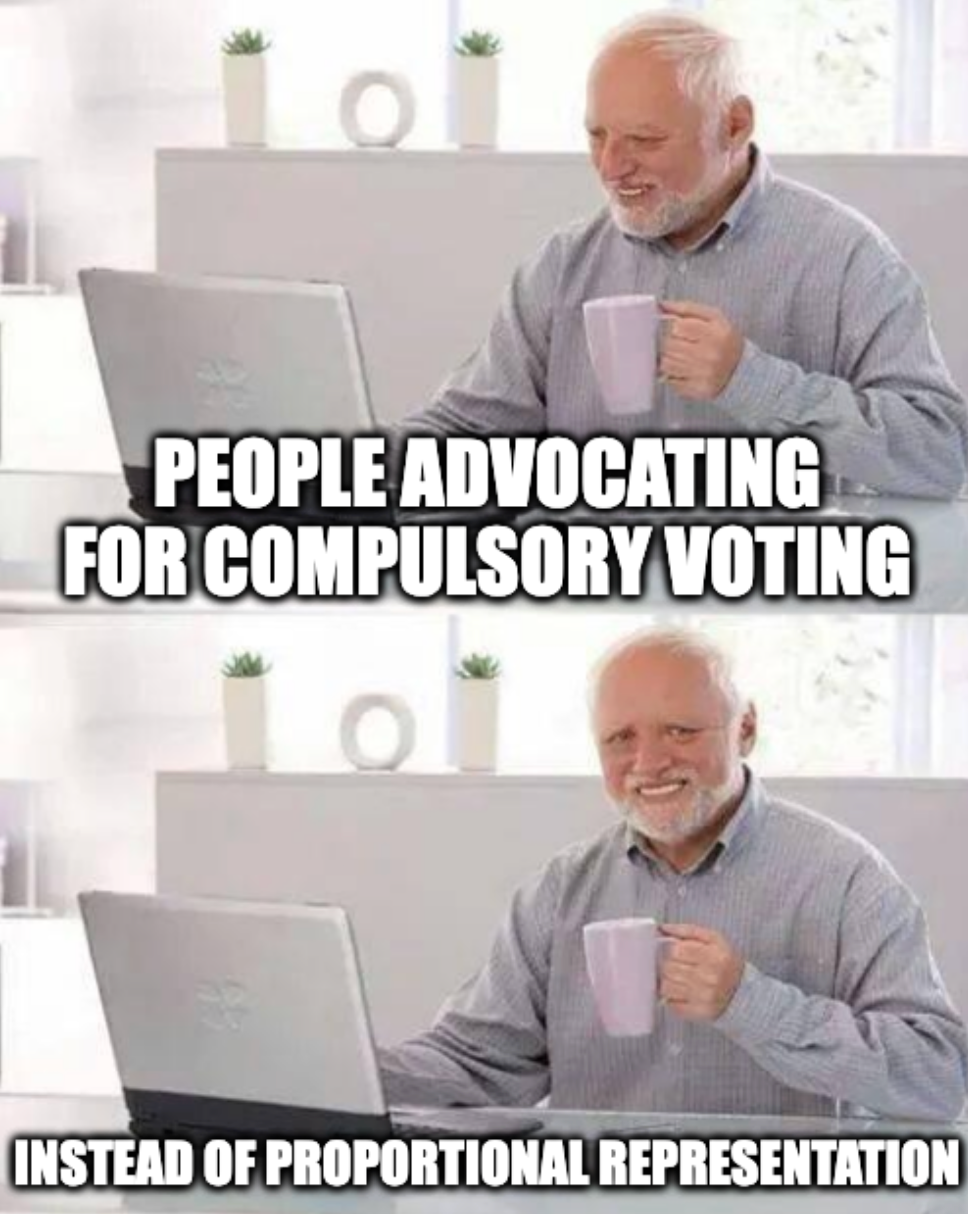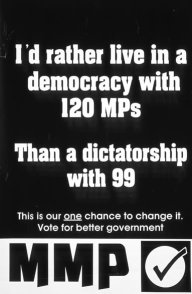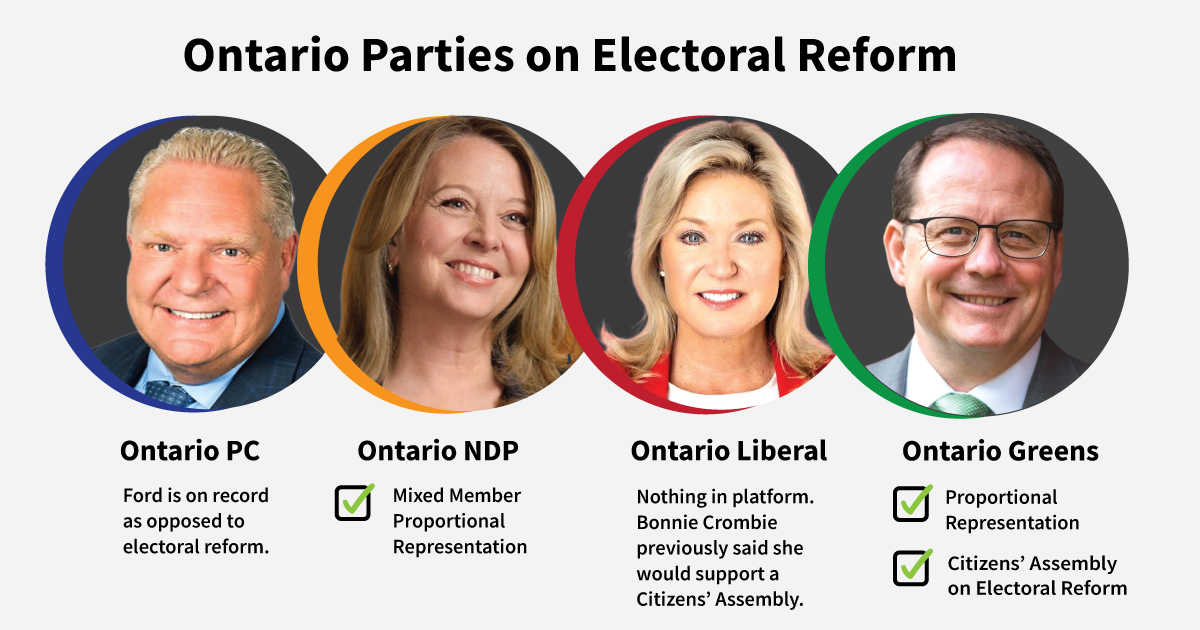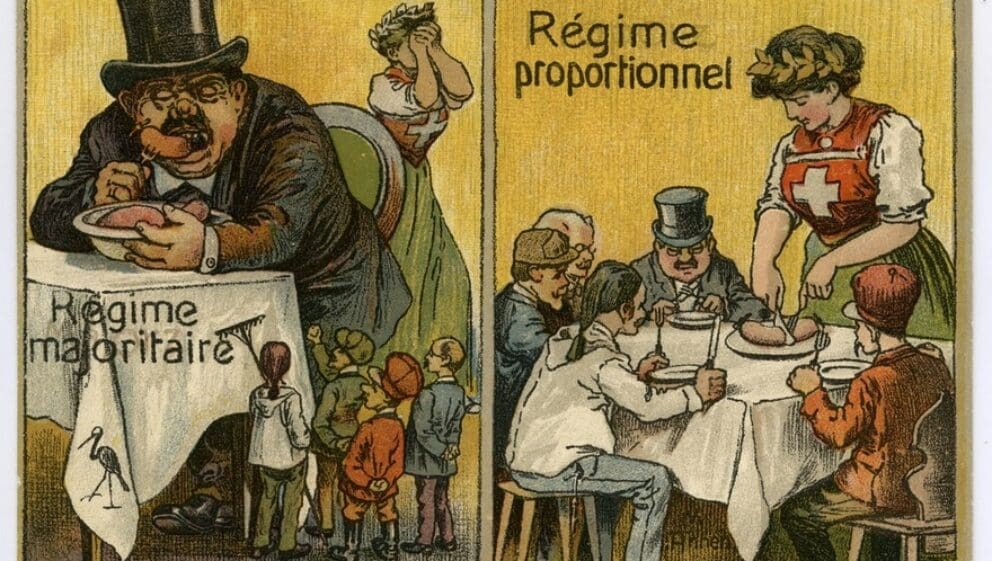I realize this community generally favours proportional representation, but I'm curious to hear your thoughts on a different approach to the problem of 'unrepresentative government'.
I question whether the goal of proportional representation, "every voter has 'their representative'", actually achieves what I consider to be a higher goal, "the government represents the interests of as many voters as possible".
Then anyone trying to grow a party or coalition with the goal of forming government will stop growing the coalition once they get 51 of 100 seats, because growing the coalition further requires difficult campaigning or negotiation, but yields no further benefit to the members of said coalition (since they would already have a majority at that point).
So even with PR, you still end up with a government that caters to a narrow majority and ignores social and economic problems that impact people outside that majority.
My solution, "a block of seats awarded in a nationwide winner-take-all Score Voting election," approaches this problem differently:
TLDR: Score Voting is good.
Canadians want national unity.
The ideal of the Good Parliamentarian claims that politicians should, once elected, represent all their constituents and not just their core base, and that a governing party should, once elected, represent the nation as a whole, and not just their members.
So why is national unity a fleeting thing that emerges only in response to external threats, like American rhetoric about annexation and economic coercion, and why does it dissipate and devolve into factionalism once the threat is resolved (or when political campaigns simply drown the threat out)?
Because the Westminster System, in its present form, is institutionally biased towards division.
There are two reasons:
- Within individual constituencies, a narrow majority of voters is enough to guarantee a win, and
- In Parliament, a narrow majority of constituencies is enough to form government and pass law.
These have a common root cause:
Acquiring a narrow majority of something is the most efficient way to achieve the maximum reward.
If the easiest path to a win is to get the support of half-plus-one, who cares if you alienate everyone else on the other side?
The Solution: the Score Bonus System
This proposal suggests an incentive-based solution to create national unity:
The Score Bonus System: award a winner-take-all block of seats to the party that achieves the highest average score nationally in a Score Voting election.
Under this system, Canada's existing single-member districts are replaced with about half as many dual-member districts, each containing one 'constituency' seat and one 'national' seat.
In each district, candidates stand either as a 'constituency' candidate or as a 'national' candidate.
Voters mark their ballots by assigning numerical scores between 0 and 9 to each candidate, where higher scores indicate stronger approval.
Unlike ranking systems, this allows voters to express support for multiple candidates simultaneously.
Sample Ballot, Mapleford North, filled in by a sample voter
| Seat |
Party |
Candidate |
Score (0 to 9) |
| Constituency |
Brown Party |
Jaclyn Hodges |
5 |
|
Taupe Party |
Dexter Preston |
0 |
|
Independent |
Cecelia Olson |
9 |
|
|
Janice Fritz |
5 |
| National |
Brown Party |
Isreal Robles |
7 |
|
|
Gale Sloan |
8 |
|
Taupe Party |
Royce Brown |
0 |
|
Beige Party |
Billie Burton |
9 |
Each district's 'constituency' seat goes to the 'constituency' candidate with the highest average score in the district.
The collection of all districts' 'national' seats form the 'winner-take-all' block, which is awarded in full to the party with the highest nationwide score.
When a party has multiple candidates competing in the same constituency:
- When computing nationwide averages, the score of its best candidate in each constituency is used.
- If the party wins the highest nationwide average, its best candidates from each constituency win the 'national' seats.
However, if no party achieves a national average score of at least 50%, the 'national' seats instead go to the 'national' candidate with the highest average score in the constituency, effectively falling back to the 'constituency' method.
Seat Type Breakdown
| Seat Type |
Seat Count |
Winning Candidate From Each Constituency |
| Constituency |
172 (one per constituency) |
'Constituency' candidate with highest score within constituency |
| National |
172 (one per constituency) |
If any party has >50% approval nationwide: best 'national' candidate from party with highest score nationwide; otherwise: 'national' candidate with highest score within constituency |
| Total |
344 (two per constituency) |
|
Example Election Results
Constituency Results, Mapleford North
| Seat |
Party |
Candidate |
C. Score |
N. Party Score |
| Constituency |
Brown Party |
J. Hodges |
65% |
N/A |
|
Taupe Party |
D. Preston |
20% |
N/A |
|
Independent |
C. Olson (Constituency Seat Winner) |
80% |
N/A |
|
|
J. Fritz |
70% |
N/A |
| National |
Brown Party (Winning Party) |
I. Robles (Eliminated by G. Sloan) |
65% |
75% |
|
|
G. Sloan (National Seat Winner) |
75% |
|
|
Taupe Party |
R. Brown |
15% |
55% |
|
Beige Party |
B. Burton |
80% |
65% |
National Results
| Constituency |
Brown Party Score |
Taupe Party Score |
Beige Party Score |
| Mapleford North |
75% |
15% |
80% |
| Rivermere South |
70% |
70% |
20% |
| Ashbourne Springs |
80% |
55% |
25% |
| ... |
|
|
|
| National Average |
75% (Winner) |
55% |
65% |
Takeaways from example election results:
- All three parties exceeded the 50% minimum average score threshold to be eligible for the 'national' seats.
- C. Olson, an Independent, won the constituency seat for Mapleford North by having the highest average score (80%) of any candidate in the constituency. The next best constituency candidate was J. Fritz, a fellow Independent, who got an average score of 70%.
- The Brown Party won all 172 national seats by having the highest national average score (75%) of any party in the nation. The next best national party was the Beige Party, which got a national average score of 65%.
- The Brown Party ran two candidates in Mapleford North: I. Robles and G. Sloan. Of these candidates, G. Sloan had the higher score, of 75%, so I. Robles was eliminated and G. Sloan contributed his 75% constituency score to the party's national average.
- G. Sloan was the surviving 'national' candidate nominated by the Brown Party in Mapleford North. Because the Brown Party won all national seats, G. Sloan won the 'national' seat for Mapleford North.
- Candidates running for constituency seats do not affect the scores of national parties
Why This System?
Consider two things true for all elections:
- Winning votes is expensive.
- The candidate with the most votes wins.
If a voter can support only one candidate at a time, then the cheapest winning strategy for a candidate is to acquire a slim majority, to the exclusion of nearly half the voters. Any more would be wasteful; any less no longer guarantees a win.
If a voter can instead support many candidates at a time, then a narrow majority no longer guarantees a win: all of a candidate's supporters may also approve of a competitor. A candidate with 60% approval loses to a candidate with 70% approval. This forces candidates into a competition not for the exclusive support of a narrow majority, but for the approval of as many as possible.
The only way a minority group can be excluded under electoral systems with concurrent voter support is if the minority group is so fundamentally incompatible with a candidate's current base that adding the minority would cost them more members from their current base than the minority adds. If adding the minority would result in a net increase in voter support, a candidate must include them, or lose to a competitor who does, even if that candidate already has the support of a majority. Because that majority might be just as satisfied with the competitor.
Electing single representatives
First Past the Post and Instant Runoff voting both fall into the first category (voters support one candidate at a time). Instant Runoff is effectively a sequence of First Past the Post elections; in each round, voters support their top choice. A narrow majority under either system guarantees a win. Hence, Division.
Compare with Score Voting. Voters support many candidates concurrently. Hence, Unity.
Electing multiple representatives
Traditional constituency elections, regardless how votes are counted within each constituency, and Proportional Representation both suffer from the same exclusive-voter-support problem as FPTP and IRV: Each seat is awarded to one representative, so parties and coalitions compete for a narrow majority within the legislature.
While Proportional Representation ensures the makeup of the legislature is proportional to the makeup of the electorate as a whole, it fails to incentivize the ruling coalition to include more than half of said representatives, or by extension, more than half of the nation.
Therefore, as long as a ruling coalition is confident in its majority, it will ignore social and economic problems that impact voters outside of said majority, even in Proportional Representation.
Instead, the Score Bonus System creates a nationwide single-winner election to effectively elect the ruling party as a whole, and using Score Voting for this election creates an incentive for this party to include the interests of as many as possible.
Electoral Systems Review
| System |
Optimal strategy |
Effect |
| Single Seat FPTP |
Secure a narrow majority of votes. |
Division & Exclusion |
| Single Seat IRV |
Secure a narrow majority of votes. |
Division & Exclusion |
| Single Seat Score |
Appeal to as many voters as possible. |
Unity & Inclusion |
| Traditional Constituency Elections |
Secure a narrow majority of districts. |
Division & Exclusion |
| Proportional Representation |
Secure a narrow majority of voters. |
Division & Exclusion |
| Score Bonus System |
Appeal to as many voters as possible. |
Unity & Inclusion |
Why combine the winner-take-all component with per-constituency elections?
Because:
- It maintains a constituency-first element to politics, even in the winner-take-all segment of Parliament. The ruling party, with a majority given to it through the winner-take-all segment, has a representative from each constituency.
- Allowing multiple candidates from the same party to run in the same constituency forces candidates to compete with fellow party members to best represent a constituency
- Having some seats that are elected only by constituency voters ensures each constituency has a representative accountable only to them
- The national seats only being awarded if a party gets >50% approval lets us fall back to conventional 'coalition government formation' with constituency-elected representatives if the winner-take-all election fails to produce a party with at least majority support. This avoids a party with, say, 35% nationwide approval, getting an automatic Parliamentary majority.
- Having both constituency and national elections occur on the same ballot avoids unnecessary complexity for the voters. Voters get a single Score Voting ballot.The ballot is as complex as is required to implement Score Voting, but no more complicated than that.
What next
I realize we're not getting Score Voting in Canada any time soon. It's not well known enough, and the 'winner-take-all block of seats' component may scare people away.
Plus, no politician content with their party having an effective monopoly on opposing the other side would ever consider supporting an electoral system as competitive as this.
Instead, I offer this electoral system to anyone who wants to take advantage of an "oh won't somebody do something" vibe to organize something, but wants to avoid their organization getting burned by the faulty electoral systems we have today.
A protocol for building a unified chapter-based organization:
- Launch regional chapters
- Each regional chapter randomly selects N interested participants, plus one or two 'chapter founders', to act as delegates to meet in a central location or online. The first conference will bootstrap the organization's 'internal parties'. Subsequent conferences evolve into a recurring networking event.
- Like-minded delegates, possibly assisted by 'political speed-dating', form 'internal parties'
- In each chapter, 'internal parties' nominate candidates for chapter and national seats.
- Each member scores each candidate in their chapter
- The highest scored 'chapter seat' candidate in each chapter becomes the chapter's local representative
- The highest scored 'internal party' across the organization as a whole wins one 'national' representative in each chapter
- Canadians, Unite!
Thoughts?

